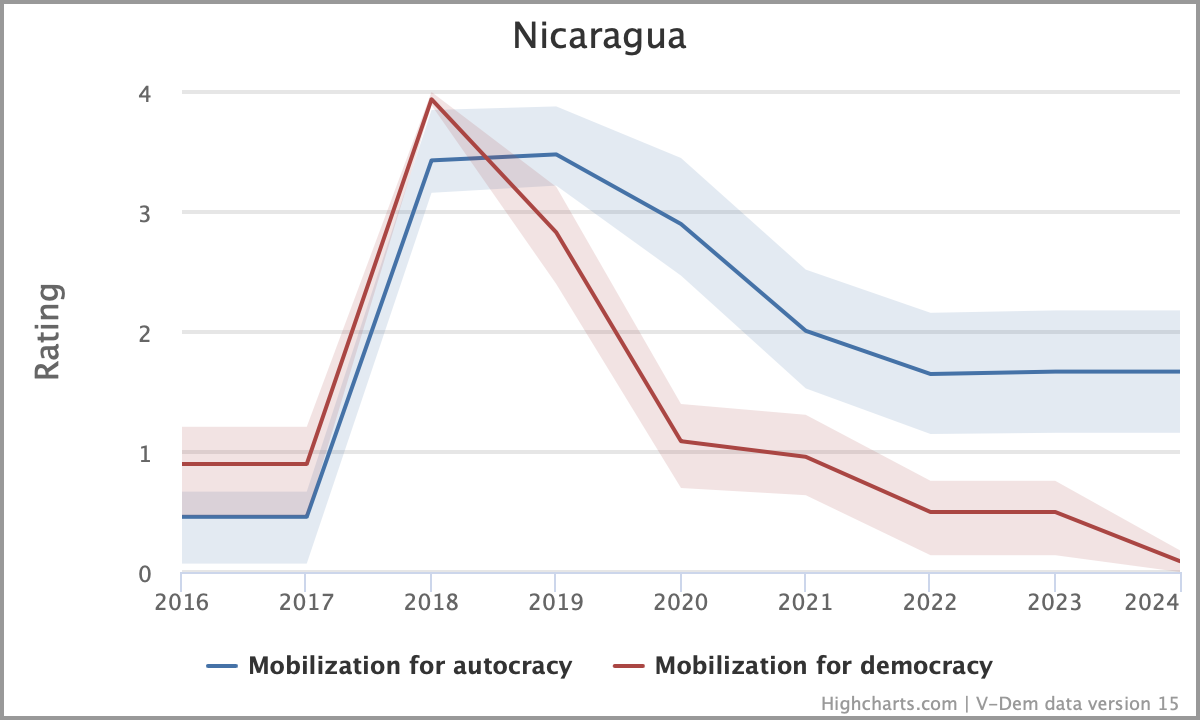From the Streets to Silence: The collapse of democratic mobilization in Nicaragua
By: Eirini Paliokosta
Sep 25, 2025
This week’s graph shows the mobilization for autocracy and democracy in Nicaragua. The indicators assess mass mobilization events pro and against democracy in terms of their frequency and size, ranging from 0 (virtually no events) to 4 (many small and large-scale events).
In 2018, mass mobilization surges when reforms on the social security and pension system triggered a wave of protests against President Daniel Ortega’s long-term authoritarian rule. In response, the Ortega regime mobilized loyalists to crackdown on the anti-government movements. Thus, while mobilization for democracy reaches historic highs in 2018, there is a simultaneous surge in mobilization for autocracy.
The government crackdown on the opposition continues after 2018, limiting the civic space and silencing dissenting voices. Authorities closed over 5,000 non-governmental organizations and more than 89 media outlets were forced to shut down. Nicaragua is among the countries where journalists face the most severe difficulties to freely operate. By 2024, mobilization for democracy becomes virtually nonexistent.
Mobilization for autocracy also declined after 2019. The consolidation of a police state reinforced Nicaragua’s evolution toward autocracy. The 2025 constitutional amendments increase Ortega’s control over the executive, legislative, judicial, and electoral branches, asserting his autocratic rule over Nicaragua.


